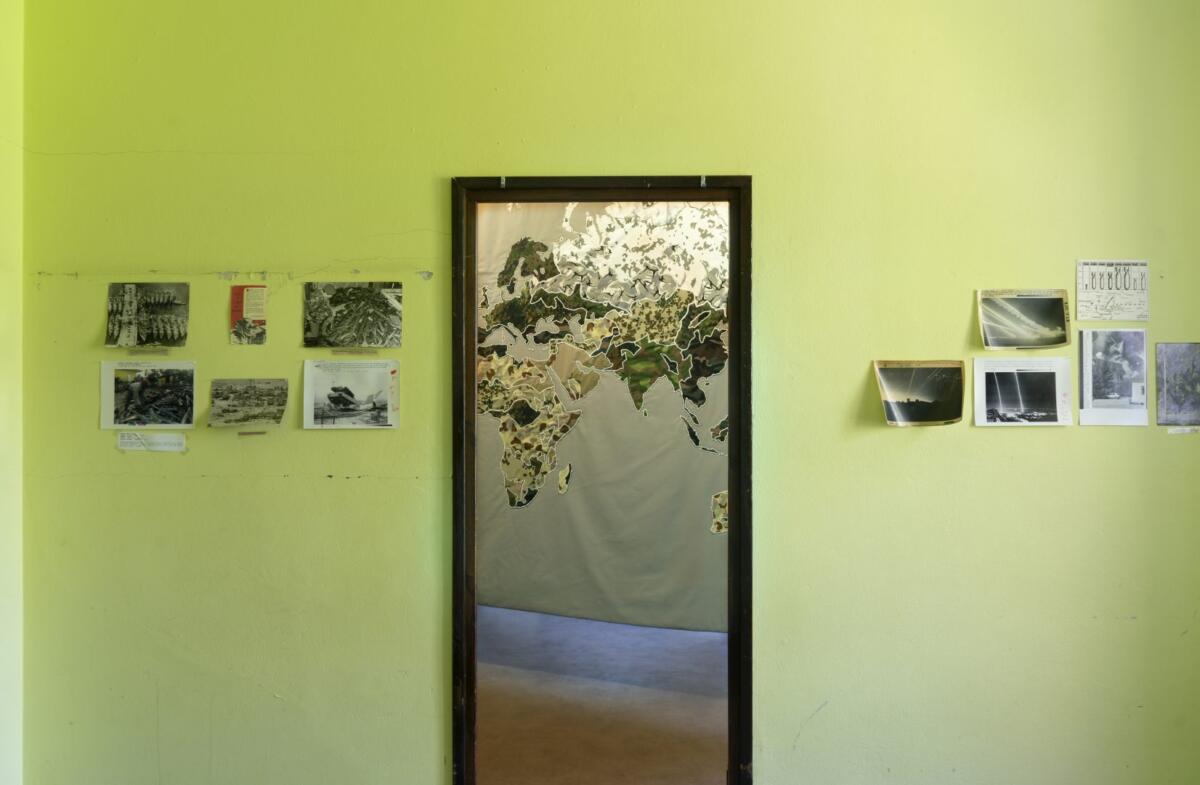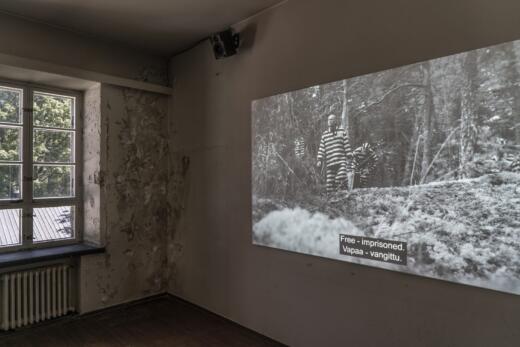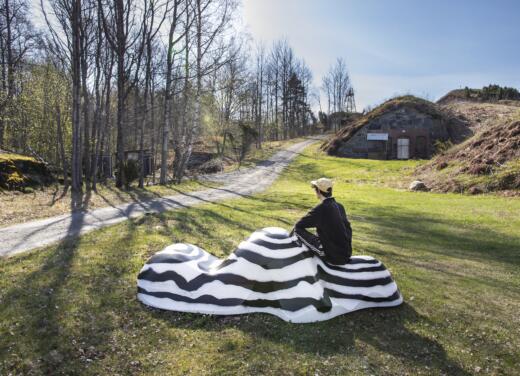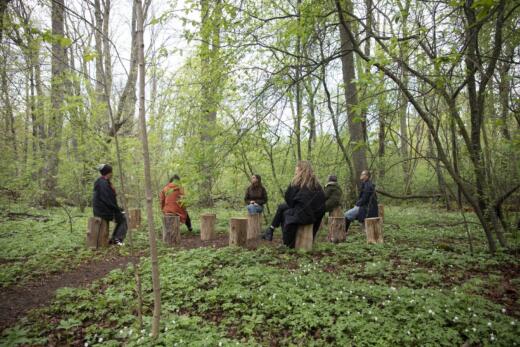
As we tentatively look forward to a post-lockdown world, the opening of events such as the first Helsinki Biennial offer both hope and the opportunity to set out a vision of a better future. Above all, many on the left will be determined that we don’t return to ‘normality’ if what normality means is a return to the damage wrought by neoliberal excess. This damage includes wealth inequality, scarcity, climate change, conflict and displacement of populations. While events such as art biennials are limited in terms of what they can do to prevent a continuation of large scale environmental destruction and social injustices, the timing of the Helsinki Biennial does bring a certain responsibility to address the criticisms often aimed at the well-worn biennial format.
After a period of two years in which biennials such as the Venice Biennale have been put on hold some might ask whether it makes sense to return to the format at all. After all, biennials have been accused of wasting resources, perpetuating cultural elitism and enabling gentrification, among other things. In this light, the curatorial duo Pirkko Siitari and Taru Tapolla have faced a difficult challenge in bringing together over 40 artists during covid lockdown and exhibiting them on the long disused former military site of Vallisaari, an island off the coast of Helsinki. Even before Covid-19 closed the contemporary art world down we may have asked whether we really need to add another biennial to the 300 already in operation globally. The answer to this question requires that we take a wider look at recent cultural debates and phenomena both in Finland and further afield. In doing so we may find that both art and international cooperation are much needed. As such, the Helsinki Biennial will play a role in helping us assess how the art world might proceed post covid.
Before going on to consider a selection of representative artworks from the biennial, it is worth revisiting one of the most resounding cultural debates to have taken place in recent years in Finland. Namely, that which took place over the value of political versus autonomous art between painter Anna Tuori and multimedia artist Jani Leinonen, which itself recalled iconic debates that took place within the Frankfurt School between Theodor Adorno and Herbert Marcuse in the late 1960s. The perennial argument over the value of political versus apolitical art reignited in 2017 when artist Tuori co-wrote an article with literary critic Aleksi Salusjärvi in Nuori Voima entitled The aesthetics of our time: capitalist realism. Tuori and Salusjärvi’s argument, in a nutshell, was that identity politics around race, gender and sexual orientation has met in recent years with capitalism’s injunction to publish and broadcast sensational stories and images so that museum curators are left with no choice but to present blatantly political imagery if they want to stay relevant. This they argued, strips art of its one true value: its autonomy, or put otherwise, its ability to exist outside topical debates, financial imperatives and political injunctions. Riiko Sakkinen, who was one of the politically involved artists targeted by Tuori and Salusjärvi, responded in the Yle in 2020 that art must participate in social debate out of responsibility, calling Tuori’s own art ‘irresponsible’.

Paweł Althamer: Seven Prisoners, 2020 ©Maija Toivanen/HAM/Helsinki Biennial 2021
While the Helsinki Biennial — entitled ‘The Same Sea’ — features both political and autonomous artworks, it on the whole performs a solid rebuttal of Tuori and Salusjärvi’s apolitical stance, featuring a number of charged works on topics from immigration, to climate change, to prison conditions, to Sami rights. Indeed, ever since the 1895 Biennale di Venezia it has been the tendency for biennials to bring together artists from across the world, naturally leading artists to both highlight local issues and topics of global concern. Carrying on this tendency, Seven Prisoners (2020) by Polish artist Paweł Althamer, is a VR video installed in a tent on Vallisaari featuring 6 inmates of the prison on the neighbouring island of Suomenlinna and the artist himself. The work sees the inmates act out an escape from the prison in a VR video that sees them move through natural landscapes on Vallisaari and elsewhere. An accompanying documentary installed in a room of an adjacent building explores the hopes and dreams of the inmates, as well as their definition of ‘freedom’. At the end of a period when we have all experienced impediments to our sense of liberty it seems appropriate that we ask the least free among us — literal prisoners — to describe freedom itself. Indeed, Althamer’s work encapsulates a principal motivation for the inclusion of marginalised communities as subjects of or participants in artworks. Namely, they teach us about the extremities of human experiences that we can otherwise only imagine. This turns Tuori and Salusjärvi’s criticism of identity politics as an artistic subject on its head. We are not being dictated to by the protagonists of Seven Prisoners, nor are they being spoken for by the artist. Rather, they and the artist offer us valuable information about their experience despite being among the most underprivileged in our society. There are ethical considerations behind such works, though each work must be judged on its own merit.
Of course, works are not only made about underprivileged subjects, but also by artists whose lives and experiences vary greatly from our own. In a room across from Althamer’s work, Helsinki resident and Turkish-Kurdish Baran Caginli exhibits a large textile piece called Carbon as a Political Molecule (2021) which consists of a world map in which each country is represented by camouflage from a national military uniform. The textiles used for each country correspond to local climate and vegetation, drawing a link between environmental disasters and war, as well as highlighting the responsibility of the military industrial infrastructure that underpins capitalism for the environment. Caginli is resident in Helsinki and as a migrant is well placed to speak about the congruence of local and international issues that affect Finland’s capital city. The work is located in Vallisaari’s former military headquarters and officer’s residence, a point that influenced the artist who has for many years wrought to explore the divisions and crossovers between military and civilian life.
For Tuori and Salusjärvi, such overtly political statements serve to perpetuate the conflicts they aim to resolve through their exposure of perceived injustice. On this point it is worth recalling that twentieth-century German philosopher Theodor Adorno’s famous injunction on the writing of poetry after Auschwitz (‘to write lyric poetry after Auschwitz is barbaric’) was followed with the proviso that we should continue to try to make art anyhow, as a challenge to the cynicism of capitalism. While Adorno favoured an abstract and autonomous art, which was able to circumvent the difficulties of directly representing human suffering, he was writing as a survivor of Hitler’s Nazism, who fled Germany for the UK and then the United States to avoid persecution. As such, Adorno took a position once all opposition to rightwing racialist tyranny had failed and the worst had already happened. Today we are in the position of trying to counter the far right, or ‘populist right’ as we now call the overtly racist and anti-immigration faction of the right wing, which has unfortunately entered into mainstream politics in the USA, UK, Italy, Hungary and, of course, Finland. Does it make sense to follow Adorno’s words, written after World War Two when we are trying to avoid such a calamity, which was driven by xenophobia, from occurring again? It is perhaps time for direct statements in art.

EGS: Archipelago of Past and Future, 2021
©Maija Toivanen/HAM/Helsinki Biennial 2021

Janet Cardiff & George Bures Miller: FOREST (for a thousand years…), 2012
©Maija Toivanen/HAM/Helsinki Biennial 2021
Of course, it would be unreasonable to demand that everyone makes directly political art and we are fortunate to be free of the kind of strict directives that characterised the debates of the 20th century. Somewhere between overtly political and purely aesthetically art lies the work of the 2-D, installation and graffiti artist EGS, a native resident of Helsinki who is as comfortable daubing walls as he is hanging prints in museums. His works often reflect on geopolitical and ecological topics through abstract forms that originate in his graffiti work. For the Helsinki Biennial, EGS has installed 8 sculptures across Helsinki, including one on Vallisaari representing either lost islands beneath the ground of Helsinki (which was once an archipelago, filled in to create one land mass) or possible ‘islands of the future’. The piece, entitled Archipelago of the Past and Future (2021), comprises brightly colored mounds made of wood, featuring black rings similar to the contour lines that depict hills on a map. To the viewer passing an individual sculpture outside parliament or on the Esplanadi square, these amorphous forms invite either artistic reflection or a sense of play, as kids and adults alike are free to climb or sit on them. The work symbolises a changing city which, like Venice — the archetypal Biennial city — could eventually disappear under water due to climate change. Though, like Katerina Grosse’s Shutter Splinter (2021), a brightly painted ex-schoolhouse on the island of Vallisaari, EGS’ works might symbolise anything you want, or even nothing. Grosse’s work features a number of protruding sharp plywood shapes, giving the former site for educating military personnel’s children the feel of an angry action painting, as well as a vast color field work. As such, it oscillates between a cathartic reappropriation of military property and a space for meditation, as Shutter Splinter’s bright forms meet with the green vegetation of the island. It also inadvertently highlights the fact that if and when this Helsinki Biennial precipitates — like many large art events — a revaluation of the value of property on Vallisaari island, it will not lead to the gentrification of a working class neighbourhood, but to the cultural appropriation of a former military site and store: art and tourism, not bombs (a powerful symbol, although the bombs have long been stored elsewhere following a munitions accident on the island in the 1930s).
A similar feat to EGS’ and Grosse’s mixing of political critique with aesthetic reflection was achieved by Janet Cardiff and George Bures Miller’s FOREST (for a thousand years, 2012), an immersive sound installation in a wooded area of the island. Visitors are invited to sit on tree stumps and listen to sounds ranging from bird song, to laughter, the sound of aircraft passing overhead, to bombs exploding, and machine gun fire. Whilst the viewer (or listener) of the work cannot help but think of warfare as different sounds from across Vallisaari’s history are broadcast to them, they are not told to specifically condemn warfare. And here it is worth asking whether Tuori and Salusjärvi’s criticism of political art says more about their reaction to it than it does about the actual works themselves. After all, do artworks ever really dictate to us what to think? Or do they perform a valuable role, in teaching how to think in a social media age which favors quick and crass statements? If this is the case, Helsinki’s Biennial brings to Helsinki the possibility of experiencing a large scale artistic exhibition featuring many different artistic provocations on display from 41 artists of around 15 different nationalities, and free of charge (aside from the cost of arriving at Vallisaari o the ferry boat). Above all, the biennial, like many art shows, posits one response to the term ‘capitalist realism’ (the notion that capitalism is the only form of society now available to us), as it was intended by the British cultural theorist Mark Fisher in his book Capitalist Realism: Is There no Alternative? At the end of the text, Fisher states,‘The very oppressive pervasiveness of capitalist realism means that even glimmers of alternative political and economic possibilities can have a disproportionately great effect.’ It is the task of art — political or not — to offer those glimmers of hope to as many people as possible. Today, in our new media landscape we cannot doubt that this is needed.
Imprint
| Artist | Paweł Althamer, ATTAKWAD, Pasi Autio, Samir Bhowmik, BIOS, Baran Caginli, Janet Cardiff & George Bures Miller, Kyungwoo Chun, Janet Echelman, EGS, Katharina Grosse, Gustafsson & Haapoja, Hanna Tuulikki, Honkasalo-Niemi-Virtanen, IC-98, Uwa Iduozee & Maryan Abdulkarim, Wanuri Kahiu, Marja Kanervo, Topi Kautonen, Tadashi Kawamata, Samnang Khvay, Jussi Kivi, Alicja Kwade, Hayoun Kwon, Laura Könönen, Tuomas A. Laitinen, Teemu Lehmusruusu, Dafna Maimon, Antti Majava, Inga Meldere, Jaakko Niemelä, Meiju Niskala, Niskanen & Salo, Sari Palosaari, Birit & Katja Haarla, Outi Pieski, Mario Rizzi, Rirkrit Tiravanija & Antto Melasniemi, WAUHAUS, Margaret & Christine Wertheim, Maaria Wirkkala, Zodiak presents: Kärkkäinen & Tarvainen |
| Exhibition | Helsinki Biennial 'The same sea' |
| Place / venue | Vallisaari, Helsinki |
| Dates | September 8-26 2021 |
| Curated by | Pirkko Siitari, Taru Tappola |
| Photos | Maija Toivanen |
| Website | helsinkibiennaali.fi/en/ |
| Index | Helsinki Biennial Mike Watson |
